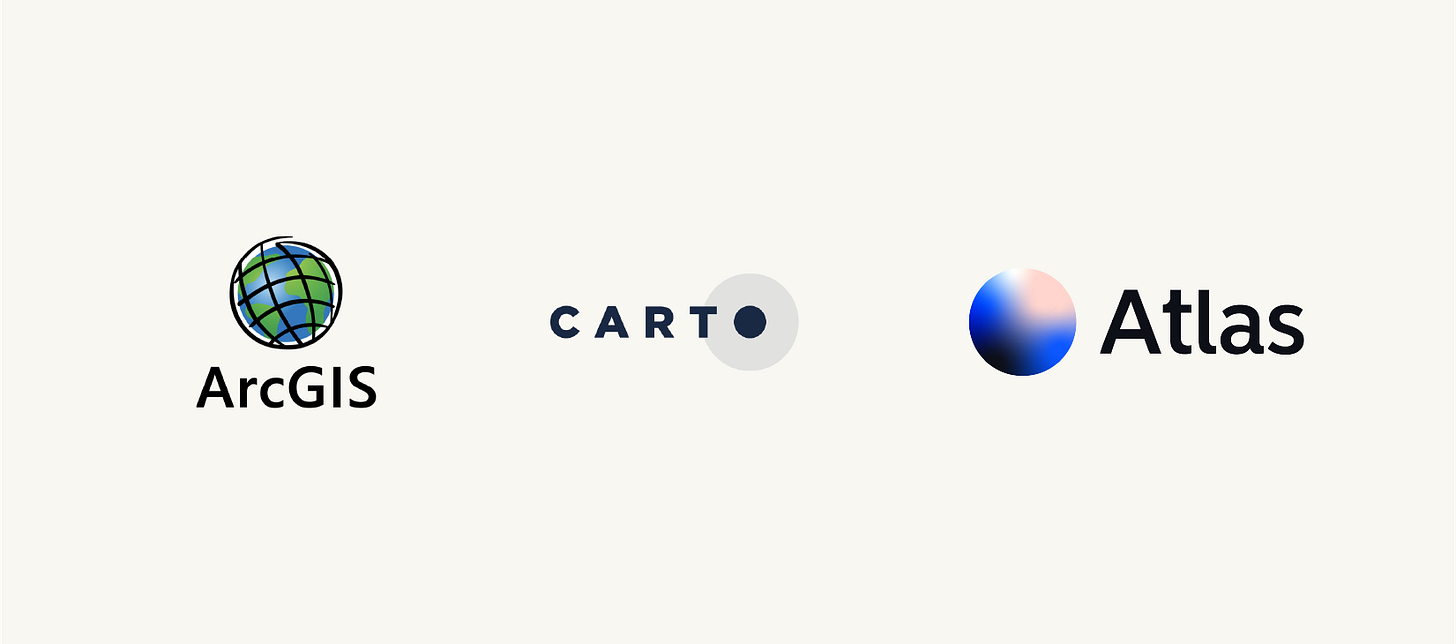Hey Map Enthusiasts,
Welcome to the first edition of Map Digest!
Today’s GIS isn’t just for experts — it’s transforming entire industries. From helping cities grow smarter to letting marketers target locally, mapping technology is becoming a key part of everyday decision-making.
Let’s dive into the trends and tools making waves in GIS this month 🌊
🧩 Predictive Mapping: The Future of GIS?
Maps have always shown us where things are.
But now, GIS is showing us where things will be. Predictive mapping is taking hold across industries, helping everyone from urban planners to retailers spot trends before they happen.
By layering historical data, traffic patterns, event calendars, and even weather forecasts, predictive GIS can pinpoint the ideal location for the next big store, forecast urban growth, and even predict future energy needs.
Imagine being able to see which neighborhoods will likely experience growth before it happens. With predictive GIS, it’s possible.
For example, a retailer could identify neighborhoods with increasing foot traffic patterns, enabling them to open a new store where demand is likely to surge.
Expect to see predictive location intelligence in public planning and logistics management soon, taking the guesswork out of growth 📈
🌍 Low-Code GIS: Tools for Everyone
Not a GIS expert? That’s no longer an issue.
Low-code GIS platforms are transforming mapping from something technical into something accessible for everyone. Platforms like ArcGIS Online, CARTO, and Atlas.co offer drag-and-drop simplicity, enabling marketing teams, local businesses, and community planners to analyze and use location data without needing a deep GIS background.
In retail, for example, low-code tools allow small businesses to analyze customer locations and find the best areas to open new stores or target specific neighborhoods.
For urban planners, it means being able to layer population growth data with infrastructure capacity to see where to expand next. GIS isn’t just about maps anymore— it’s about using location insights to make smart, data-driven decisions.
If you can click, drag, and drop, you’re ready to start mapping 🚀
🛰 Real-Time Mapping: Insights as They Happen
Who doesn’t love live updates?
Real-time data is transforming GIS into a dynamic tool for industries that need up-to-the-minute information.
With the increase in IoT devices, from traffic sensors to weather stations, live GIS data is accessible for everything from disaster response to fleet management.
Esri and Google Maps are at the forefront of real-time GIS. Cities are using it to monitor traffic and reduce congestion, while emergency teams are tracking wildfires and other natural events to provide up-to-date response measures.
Imagine being able to see a delivery fleet’s exact location or monitor a festival’s crowd density in real time to manage flow and avoid bottlenecks. Real-time GIS is quickly becoming a game-changer in any field that needs immediate, accurate information ⚡️
🔥 The Power of Data Storytelling in GIS
In the past, maps were static; they showed data points but didn’t tell stories.
Today’s GIS pros, however, are using maps to communicate stories and insights, making GIS data more compelling than ever. This shift to data storytelling in GIS is helping organizations convey complex information in a way that’s easy to understand and visually engaging.
Consider using ArcGIS StoryMaps, a tool that allows users to blend images, maps, and narratives into a single interactive experience.
Conservationists, for example, can use StoryMaps to show how habitats change over time, giving the public a clear visual of what’s at stake in conservation efforts.
Urban planners might use it to visualize the impact of infrastructure projects, helping citizens understand how new developments will shape their communities.
🚀 Industries Embracing GIS: Practical Use Cases
GIS isn’t just for geographers anymore. Here are a few industries that are adopting GIS in exciting ways:
Retail: Retailers are using GIS to track foot traffic patterns, target specific areas with local ads, and even plan delivery routes. Predictive GIS can help them pinpoint high-demand areas, so new store openings aren’t left to chance.
Urban Planning: City planners rely on GIS to analyze neighborhood growth patterns, manage zoning, and make decisions on transportation and public infrastructure. With predictive GIS, planners can anticipate future needs and allocate resources to support growth proactively.
Agriculture: Farmers use GIS to track soil conditions, monitor crop health, and map weather patterns. Real-time data helps farmers make decisions on irrigation and planting schedules, maximizing yield and reducing waste 🌱
Environmental Conservation: Conservationists use GIS to track animal migration, monitor environmental changes, and even predict natural disasters. Real-time mapping and predictive analysis allow for quick response to environmental threats, from wildfires to deforestation.
Public Health: Health agencies have used GIS to track disease outbreaks, map vaccination sites, and analyze patterns in health data. The CDC, for example, used GIS to monitor COVID-19 spread, helping identify hotspots and manage public health resources effectively.
🛠 GIS in Daily Life: Beyond the Experts
Most of us interact with GIS daily, whether we realize it or not. When your phone gives you a traffic update or shows you the best route, it’s using GIS. But these everyday applications are expanding to serve new purposes:
Event Planning: Mapping tools are used to find ideal event locations, plan routes, and manage foot traffic at festivals or marathons.
Local Marketing: Businesses can analyze the geographic distribution of their customers and run targeted campaigns. Have you ever received an ad for a nearby coffee shop right when you needed a pick-me-up? That’s GIS at work.
Real Estate: Buyers and sellers rely on GIS to analyze school zones, crime rates, and neighborhood growth, all of which can affect property values and buyer interest.
The tools that started as niche resources for mapping experts are becoming everyday essentials for anyone who needs insights tied to a location 📍
🌱 Try It This Week: ArcGIS StoryMaps
If you want to get hands-on with GIS, try out ArcGIS StoryMaps. It’s a beginner-friendly way to turn data into a compelling narrative with text, images, and map layers.
Start with a simple topic — maybe even create a map to showcase your city’s best restaurants or scenic spots — and see how it feels to share a story visually.
ArcGIS StoryMaps is widely used across industries for projects like visualizing neighborhood changes, showing conservation efforts, or analyzing company expansion locations.
Dive in, and you’ll see why data storytelling is becoming the go-to way to communicate insights with GIS.
That’s all for this week! GIS is evolving fast, and we’ll keep you posted on the newest developments each week. Have a question or a topic you want to see covered? Hit reply and let us know.
Cheers,
The Map Digest Team
P.S. What’s the coolest map feature you’ve come across lately? Traffic updates? Real-time tracking? Let us know — we’re always on the lookout for inspiration!







